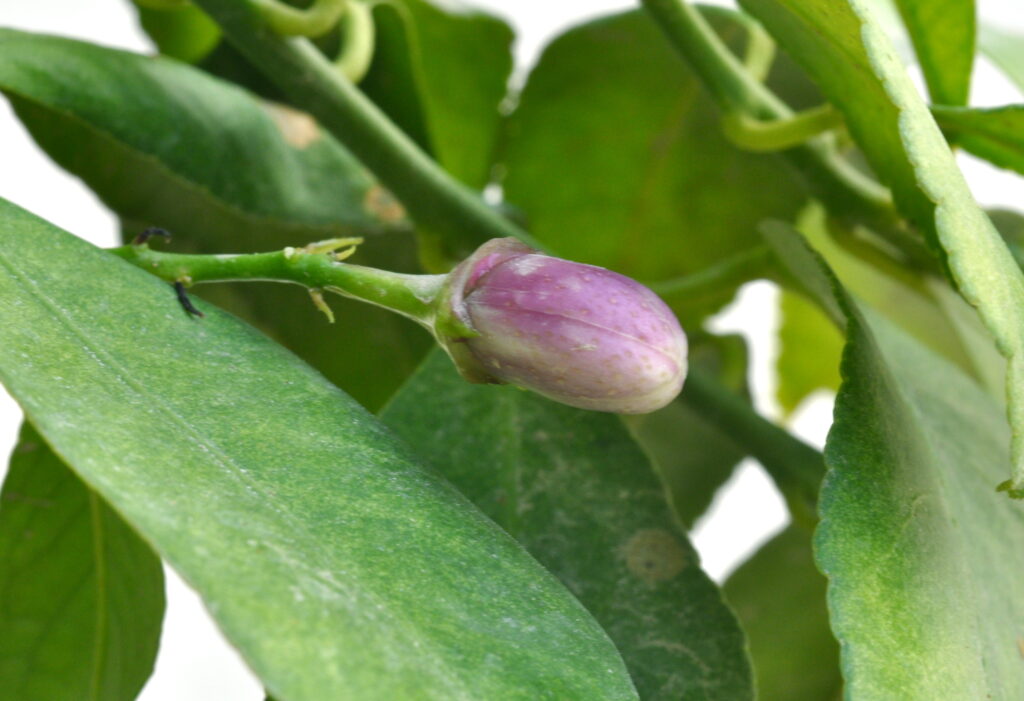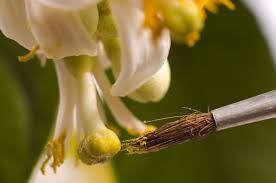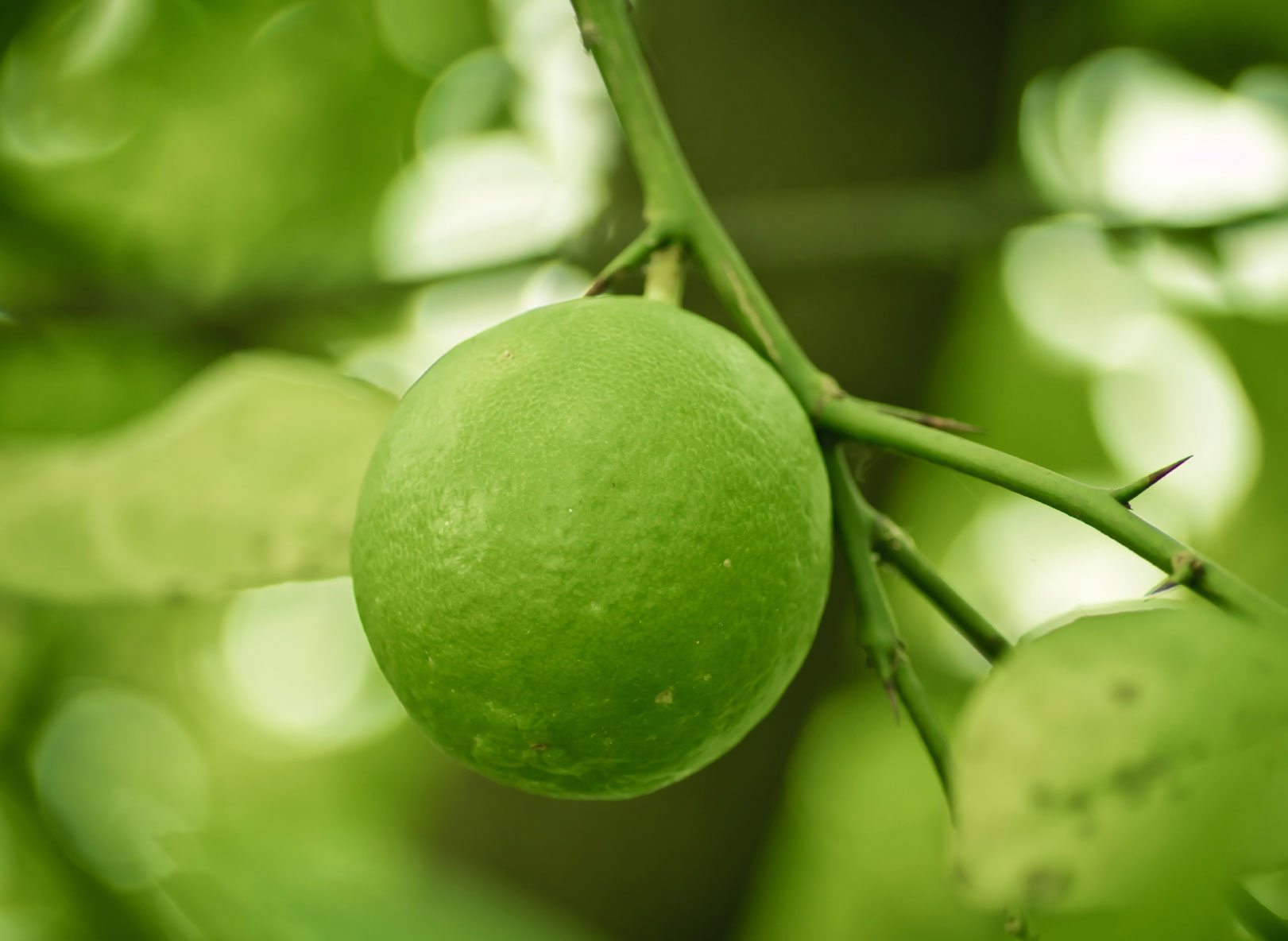Lemon trees are beautiful once they grow in your garden so having your lemons not turning yellow might worry you a little.
And if you grow them in containers, they make ornamental specimens.
Lemons require good maintenance to produce delightful and ripe fruits, so if you increase the ease, you need to give them enough attention for good yields.
If you do not give lemon trees enough care, they will have bitter and juiceless fruits and may stay green even when ready for harvesting.
Perhaps you are growing lemon trees, and you feel they are healthy enough, but when you expect the fruits to be ready and ripe, the lemons do not turn yellow.
So you are wondering why the lemon fruit stays green even at the time of harvest. Read this article to find out why lemons stay green;
Why Do Lemons Stay Green?
1.Lack of enough sunlight makes lemons not turn yellow

If your lemons do not get enough sunlight access, perhaps you do not put them out for direct sun for at least six hours per day; they will lack the sun they need to thrive. No sunlight will make a lemon stay green because of the effects of lacking light.
2. No pruning results to lemons not turning yellow
When you do not prune a lemon tree, it will not have space to access sunlight and allow adequate air circulation into the stems. The more the branches on a tree, the lesser chances for it to get direct light.
Still, the many unpruned branches will bring the same effect of no sunlight. The tree will not have enough energy to concentrate on fruiting. The result of this is the lemons stay green hence not turning yellow.
3. Lack of fertilizers leads to lemons not turning yellow
Does your lemon tree lack fertilizers? If yes, it’s one of the reasons the lemons are not turning yellow and staying green.
Lemons are heavy feeders, so you need to add nutrients to the soil to give the tree energy when it’s time for blooming and fruiting.
If the trees lack nitrogen and potassium, then the fruits will grow slowly hence not turning yellow when they are ripe.
4. When the fruits are not mature enough hence lemons not turning yellow

Lemons might be staying green and not turning yellow because you have not left them on the tree to mature enough.
After a lemon tree bearing fruits, it needs another nine months for the fruits to grow and get ripe, so you need to be patient with the lemons before removing them off the tree.
5. Adverse weather conditions
Cold temperatures are unfavorable for lemon tree growth. If they go below 40 degrees F, the lemon’s growth slows down, and they become dormant.
Lemon dormancy is popular during the winter season, where the lemons do not enjoy the frost weather conditions. The ripening process slows down, and so even when the fruit is mature, it might stay green.
On the other hand, when the weather is scorching, it brings stress to a lemon tree, making the tree produce juiceless fruits and slowing the fruit ripening.
In drought conditions, you need to water the lemon tree more often to reduce the tree’s stress and increase the chances of having a healthy thriving fruit.
6.Diseases attack the tree hence lemons not turning yellow
Lemons may not turn yellow due to diseases caused by the stress from the above factors. The fruits might begin to develop black hatches, which indicate infections and affect the fruit from not turning yellow.
Lemon fruit color might indicate ripe lemon, but other factors can show the lemon’s readiness even when it’s still green. It would help if you tasted the lemons to confirm whether they are flavorful and juicy.
How to ripen green lemons
If you remove green lemons off the trees before they are ripe, the chances are high that these lemons can no longer become ripe.
Perhaps you have under-ripe lemons, and the only hope you have to make them ripe is by keeping them in a sunny location with warm temperatures. The fruits will become mature, though still not changing the taste; they might even be sour!
So how can you ripen green lemons?
1. Ripen your lemons on a counter

Lemons will not become adequately ripe once you pick them from the tree. Still, if you keep them a little longer on a counter in a bright spot but not in direct sunlight, they will become yellow but may still taste sour.
Sometimes the color might not change, but a lemon becomes ready from the inside, so you need to check the juice even when the fruit is still green.
2. Leave lemons on the tree to ripen.
When you give lemons enough time on the tree to get mature enough, they will become ripe. Make sure you keep the tree healthy to enable it to bear the fruit and have it ripe.
Ensure proper sunlight for the tree to help it turn yellow, adequate watering to avoid soils from drying out, and well-draining soils. Enough nutrients for the tree by adding fertilizers, and the lemons will be grown and ripe.
A lemon tree produces fruits after three years, so you need to make sure the tree is the right time and age for the lemon to ripen.
3. Check for diseases

When you want your lemons to become ripe, make sure you look out for any possible diseases and infections for the tree, and your fruits will be healthy and mature at the right time.
If there are any dead branches due to infections or fungus, cut them from the tree. A healthy tree will produce healthy fruits.
4. Know how a ripe lemon looks
When you know what to look out for in a lemon to see if it’s grown, it will be easy for you. Look out for the color, which is yellowish, and the fruit’s skin will be smooth. A ripe lemon is also husky and juicy.
Always pick out only ripe lemons from the tree, lighter color, and somewhat s, ofter when you press it.
5. Hand pollination

If the lemon tree is in a container and indoor, you need to help it with hand pollination to facilitate fruit production. Use a brush to move pollen from one flower to another, and fruits will form quickly. The leisurely formation of fruits will aid quick ripening of the green lemons if you give them proper care.
Baby lemons are turning yellow and falling off.
It’s common for lemons to drop not only its blossoms but also some of the baby fruits, especially when the tree is immature. Most times, the ripe and ready lemons become yellow, but when baby lemons begin turning yellow, it creates an alarm to you.
1. Forming new roots
Turning yellow and dropping baby lemons happens when the tree releases new roots to build a robust root structure.
2. Too much load for the tree
When a lemon tree gets too much load from the fruits or gets stressed, it will drop some baby lemons because it can’t have enough energy to sustain all the fruits. Sometimes splitting of fruits happens to baby lemons, the skin breaks, and eventually, they rot and die.
The split also happens when the lemon tree grows at a faster rate. The tree fails to accommodate all the fruits it bears, so you do not care for the tree-like watering during hot weather conditions.
3. June drop
Sometimes baby lemons turn yellow and fall off the tree because it occurs in the months from May-July. When a tree has a lot of fruit during this season, the lemon size will be small and eventually drop. The tree produces more than it can support hence self-thinning the fruits to remain with only the quality lemons.
4. Nutrient Deficiencies
Lack of nutrients in a lemon tree leads to baby lemons yellowing and falling off the tree. When you do not add fertilizers rich in Iron, zinc, and magnesium, your baby lemons will be vulnerable to any diseases and deficiencies which cause yellowing. When the pH level is not balancing in the soils, it causes nutrients not to get absorbed by the tree.
5. Uneven Watering
Lemons are sensitive to improper watering; it leads to fruit drop if your watering is uneven. So when you do not water the lemon tree during the dry season, it will dry out; the baby lemons become yellow and fall off.
When temperatures go very high, they lead to premature fruit drop for young lemons.
Why are lemons yellow?
Citrus family trees usually produce green fruits while still growing.
Lemons are not exceptional; they lose the green color when they ripen. A chemical known as anthocyanin replaces the chlorophyll pigment.
Lemons can continue to ripen even after you pick them from the tree and on the shelves for some more weeks in a bright spot; they may turn yellow.
Benefits of green lemons
You can get many benefits from growing lemons at your home, and having a thought that you will have your lemonade is so exciting. The many ideas of what you can do with lemons are the most exciting bit for any gardener. Many years of waiting are beneficial in your life.
When your lemons are ready, you have the option of either taking them from water, adding them to other fruits, or eating the pulp. The choice of eating fruit is better for your life benefits.
Here is what we can do with green lemons;
1. Controlling weight
Lemons are a good fruit for you if you want to reduce your weight. There is a fiber in lemons that helps expand your stomach and makes you feel full for a longer time, reducing food consumption.
Also, when you drink lemon juice with hot water, it helps a lot of weight loss as it helps in burning calories in your body. The existence of plant compounds in lemons also helps in controlling your weight when you consume lemons.
2. Heart health
Since lemons are a good source of vitamin C and consume them daily, heart diseases and risk will be below. Still, the lemon fiber also contributes to your heart’s well-being, and the chances of getting heart diseases will be less.
A study shows that when you consume 24 grams of lemon fibers extract every day for at least a full month, your cholesterol levels will become low.
3. Lemons improve digestion
Lemons have their primary fiber as pectin, which has fewer sugars hence multiple health benefits. The existence of this fiber helps improve your gut health. It helps in slowing the digestion of sugars and starches in your body, thus reducing sugar levels.
To benefit from the lemon fruit fiber, you are better off eating the pulp to the juice. The thread is mainly in the pulp, so you miss out on the pectin’s benefits when drinking the juice.
4. Lowering cancer risk
Lemons are a healthy fruit that might prevent some cancers from attacking your body. Some studies show that people who often eat lemon fruits can reduce cancer risks. The compounds in the lemon-like limonene may have anti-cancer effects.
5. Prevents anemia
Lemons are also rich in irons. When you eat them, you prevent your body from an iron deficiency known as anemia.
Since lemons contain both vitamin C and citric acid, you can get protection against anemia. So you need to ensure you absorb as many lemons as you can to get more Iron.
Conclusion
Lemons are yellow when you give them enough time at the tree, and they will stay green when you do not know when to remove a ripe fruit. Yellow lemons are ripe lemons though green lemons may still be ready if you find them juicy and sweet.
This article shows that if you do not give proper care to the lemon tree, baby lemons can begin yellowing and fall off the tree. Once lemons are ready, many benefits come to you and your health, which you will enjoy at the time of harvest.
Frequently Asked Questions
You can leave a lemon fruit on the tree until late winter, but you need to harvest all the fruits before the tree blooms again in the spring. Pick all fruits from the tree before the significant freeze because the low temperatures usually freeze the fruits.
Green lemons are not yet ready most times, and when a lemon tree is growing, the fruit has this green pigment because it’s still immature. Some green lemons are ripe though the color is always the same, so you might have to check the fruit, whether it’s plump and juicy by cutting it.
Yellow lemons are usually ripe lemons, and Meyer lemons have the most yellow color when ready. These lemons are ready yellow and very juicy, so you need to pick them once you see the colorfully becoming yellow.
When lemons begin to grow on a tree, you need to give them another six months to mature. Ensure not to harvest Meyer lemons until the skin pigment changes from green to yellow with a smooth husk.
